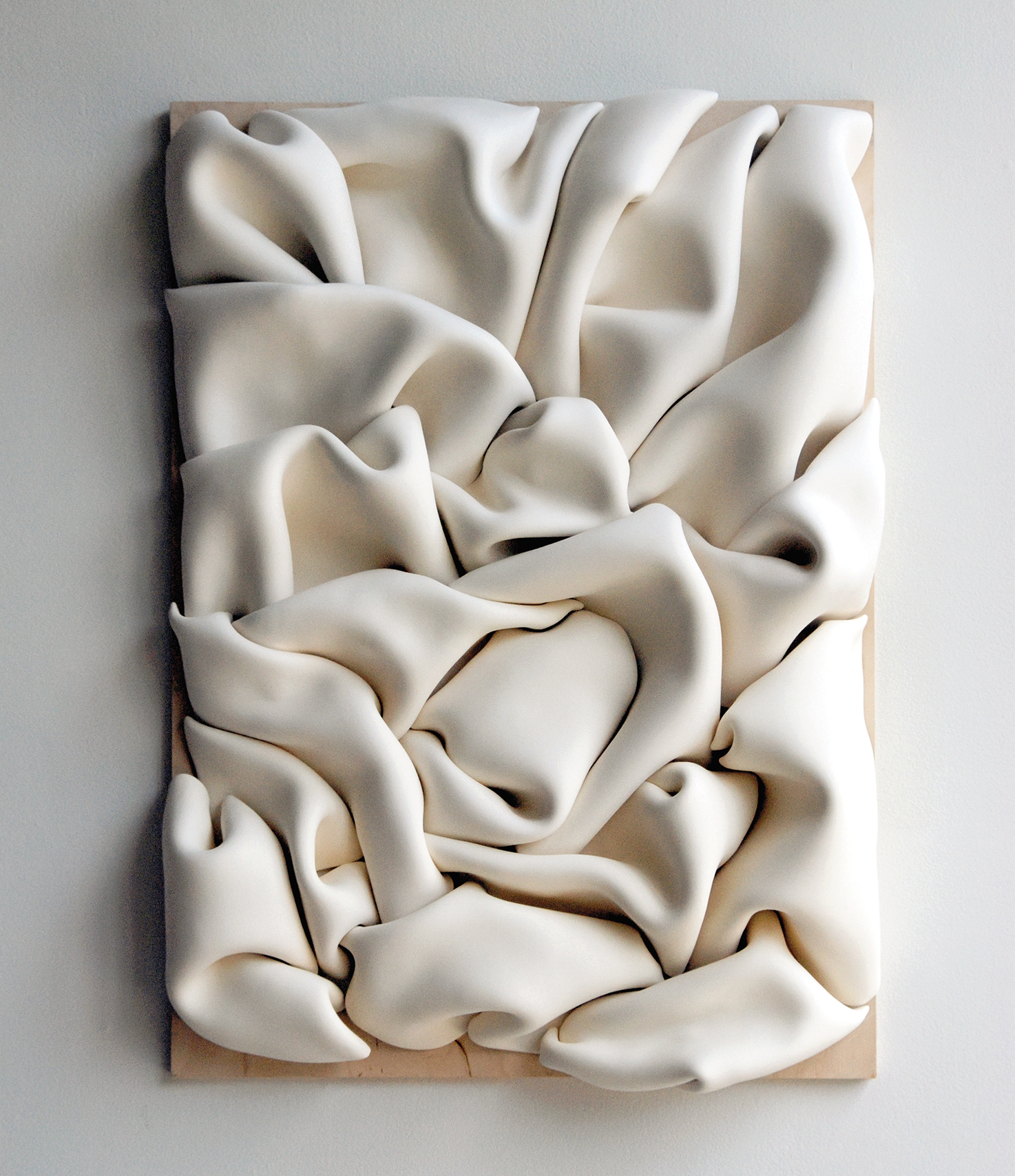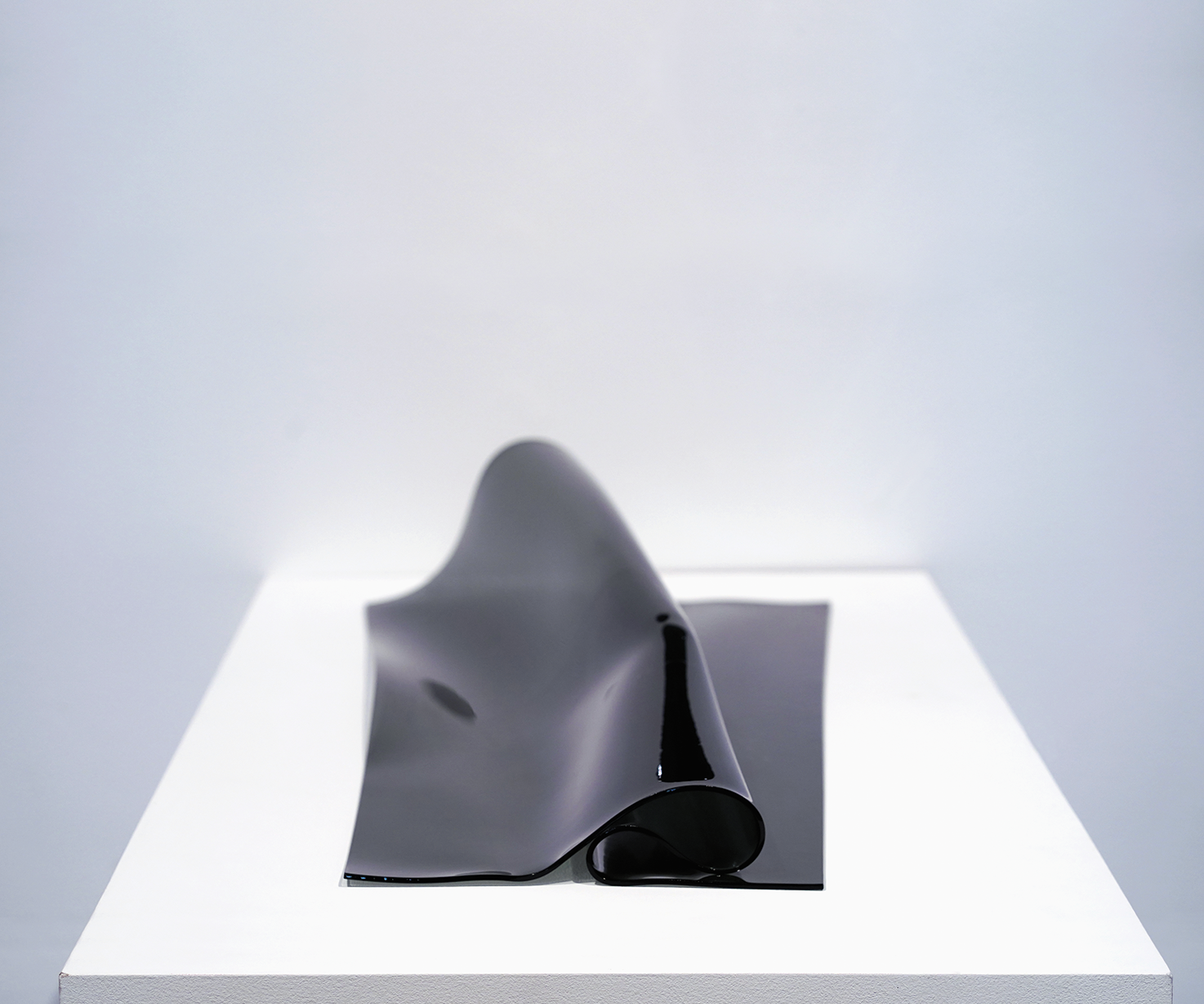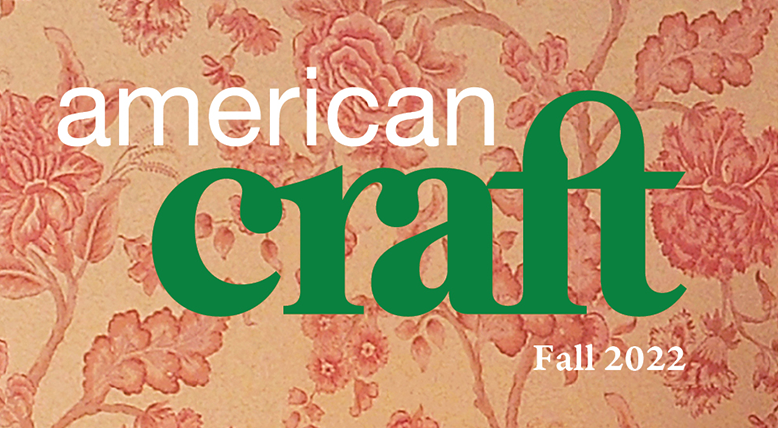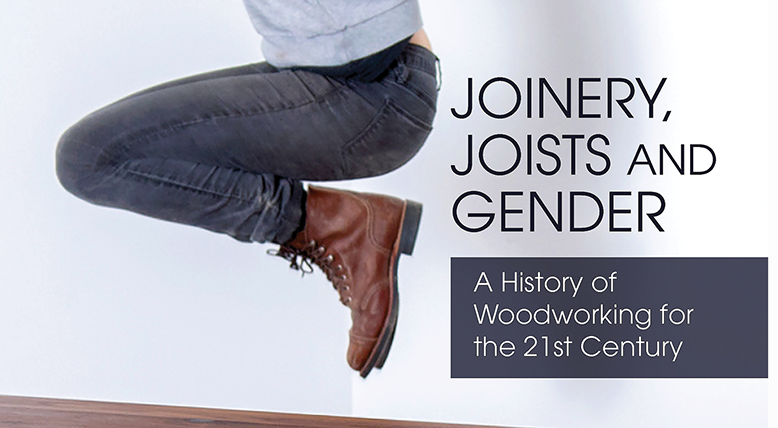As soon as we decided on “gather” as this issue’s theme, we were drawn to craft artists who gather their material as part of the fashioning process—by, for example, accumulating, bunching, and folding. For the artists whose work is featured in these pages, folding—not only of textiles, but also of clay, glass, and metal—is a key element in their aesthetic, expressive, thematic, or meditative practice. Here they discuss what folding means to them and how and why they turn their material back upon itself in specific works.
Fine Folds
The simple act of folding—turning material back upon itself—can become powerfully expressive in skilled hands. Four artists discuss how the art of the fold operates in one of their significant works.
By the editors of American Craft
November 15, 2022

Detail of sculpture by Jeannine Marchand.
Jeannine Marchand
Jeannine Marchand is a Puerto Rican studio artist based in Spruce Pine, North Carolina. Her ceramic work has been exhibited nationwide and can be found in public and private art collections internationally, including the Museo de Arte Contemporáneo de Puerto Rico and the Keramiekcentrum Tiendschuur Tegelen, Netherlands.
American Craft: How did you make the folds in Untitled?
Marchand: Untitled was hand built with slabs of white clay. Each slab is rolled out with a rolling pin, then draped and folded to the contour of the previous one. After the clay dries, each piece is wet sanded, dry sanded, fired in the kiln, and dry sanded again. This treatment allows the smooth surface to absorb light gently, accentuating the volumes and shadows.
Why fold?
My creative journey is instinctive and improvised. The making process is physical and fluid, like a dance. It is a collaboration with the clay, where I am receptive to where it wants to curve, fold, or cave. When a piece is finished and on the wall, it responds to natural light and it reflects pure calm, a moment of bliss.

Jeannine Marchand, Untitled, 2007, clay and plywood, 33 x 24 x 6 in.
Charisse Pearlina Weston
Charisse Pearlina Weston is a Brooklyn, New York-based conceptual artist and writer who works in glass sculpture, sound, video, and photography. Winner of the 2021 Burke Prize from the Museum of Arts and Design in New York, her work has been featured in group shows at the Contemporary Arts Museum Houston and at Artpace San Antonio, as well as solo exhibitions at Project Row Houses (Houston), Abrons Art Center (New York), Recess Art (Brooklyn), and the Moody Center for the Arts at Rice University (Houston).
American Craft: How did you make the fold in i am moored along the soft shored unity of impatient ruin?
Weston: Through balancing and hot folding by hand.
Why fold?
I am interested in the fold as a means by which to think about Black intimacies and interiority as sites of resistance against the risk of anti-Black violence that Black people face globally.
The series to which this work belongs represents early formulations of my ongoing research into the ways in which glass—as an architectural and surveillance material—is tied to perceived visibility, intimacy, and power. I am thinking about the ways that glass in the symbolic and material realm complicates Black intimacies and interiors by justifying anti-Black spatial politics: concepts like the “broken window theory,” for example, inhibit and threaten Black movement through space by equating Black presence with criminality; media emphasis on shattered windows and broken glass during historical and recent Black protests for equality diminish the reason for and social demands of those civil actions. Furthermore, these negative characterizations often work to reinforce the violent injustice that ignited those protests.
In considering this tenuous reality of Black life, my use of poetic, semi-autobiographical, and historical text fragments placed within the folds of glass attempts to give form to the delicate ways that we, as Black people, hold space for ourselves.

Charisse Pearlina Weston, i am moored along the soft, shored unity of impatient ruin, 2021, enfolded glass etched with text, 5 x 20 x 30 in.
Janne Peltokangas
Janne Peltokangas is a Sámi artist living and working in Finland. “I explore forms of complexity through traditional blacksmith techniques,” he writes. “My work is a modern representation of this ancient craft. I use the plasticity of hot iron to create multilayered forms that relate to my Sámi ancestry and my home region’s flora.”
American Craft: How did you make the folds in Sieidi No. 8?
Peltokangas: I use iron from discarded electric engines that I salvage from scrapyards; then I cut the material into roughly similar slices and tag weld them together. After this, I throw them into a coal forge and heat them up to welding temperature. Then I use a power hammer to forge weld them into billets, or metal bars. I weld them on only one side, because I want to leave intact the folds on the other surface, which will be the exterior of the work. This surface will have a beautiful texture when it’s hot forged and formed into a sculpture.
I use a gas forge to heat these welded pieces, as it provides even heat and makes forming the sculpture easier and more fun. Hot forming is done with various rounding hammers on an anvil, with some help from other hardy tools. When the final form is realized, it’s time to color the sculptures. This is done by heat-treating the pieces in the kiln to bring out the iron oxides from inside them. Another way I color my artwork is by applying a mixture of used motor oil with ashes from coal. This produces a black layer on the surface that is at the same time glossy and somewhat see-through and natural.
Why fold?
Experimenting! For me, every project starts with exploration, and sometimes it turns out that it’s time to fold. Other times, I layer metal in different ways and forge it, but I’m always following that desire to experiment and see how far I can go before material crumbles into a pile of dust. Inspiration for my work comes from Sámi mythology and psychology, and from iron itself. I tend to combine these elements in my work. What inspires me most is the uniquely rough and sensitive landscape of Lapland—my childhood home, where my ancestors have lived for millennia.

Janne Peltokangas, Sieidi No. 8, 2020, forged iron, 20 x 16 x 14 cm.
Simone Pheulpin
Simone Pheulpin is a self-taught artist who lives and works in Paris and in the Vosges Mountains. She turns strips of unbleached cotton into organic creations that resemble enigmatic landforms. Her pieces can be found in the collections of the Victoria and Albert Museum (London), the Museum of Decorative Arts (Paris), and the Art Institute of Chicago.
American Craft: How did you make the folds in Geneviève Série Eclipse?
Pheulpin: My pieces are made by an intensive process that involves repeated folding and pinning. I use strips of cotton that I just bend, turn and fold, layer atop layer, while immobilizing every movement with tiny steel pins. I tuck and pin flat cotton and compress it by centimeters again and again until I create a solid three-dimensional shape. Fifty thousand pins a year are necessary for my creations. But I always want to improve my practice, and I am always discovering new folding techniques, ones that I never imagined were possible despite the many years I have been doing this. They give me new possibilities for my work.
Why fold?
Folding is a meditative process for me. When I start folding cotton, I can let go of everything. I am always inspired by natural shapes and textures—the rings of a tree, moss, arid terrain, or geological strata. My work is more than an homage to nature; I want to evoke the passage of time. It’s all about memory, but memory that enters the work through the hands. There are moments when I know exactly what I want, and yet things won’t proceed as I wish. At those points, I can sense I am being led somewhere else, and I let the fabric itself take over.

Simone Pheulpin, Geneviève Série Eclipse , 2019, cotton folds, pins, 51 x 43 x 10 cm.
Before you go!
We believe that making creates a meaningful world, and we hope you do, too. Deeply researched and impactful journalism on the craft community is in short supply. At the same time, being featured in a national publication can have a major effect on a maker’s or artist’s livelihood, particularly those who are just starting in their career. You can help support our mission and the work of makers around the country by becoming a member or by making a gift today.
Thank you!
American Craft Editors






